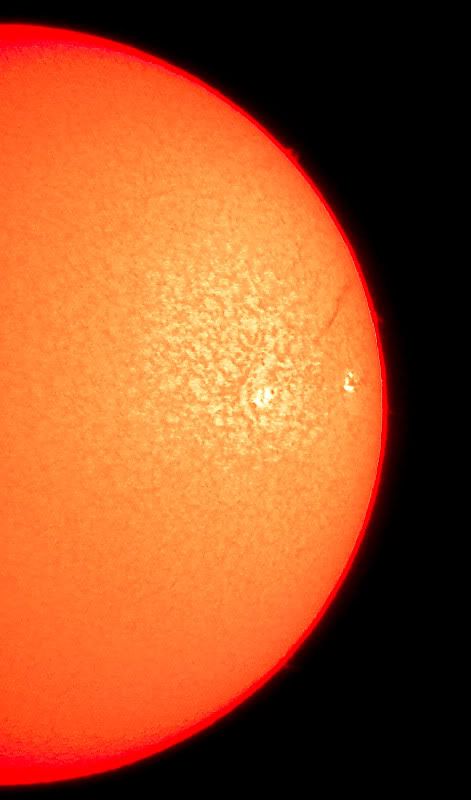Well, its pouring with rain and blowing a gale outside so this seemed the right time to start up a diary of my recent return to amateur astronomy after 25 years. Why so long away from the subject ? Well astronomy was never completely ignored over that time and I always kept up with the latest events via astronomy magazines, the news and the internet. I even occasionally made observations with the naked eye or a pair of 10×50 binoculars (I will never forget the joys of seeing Comet Hale Bopp above the house we rented in Montgomery over the Winter of 1996/7, the total solar eclipse of August 1999, the many lunar eclipses and numerous meteors). But somehow the common pressures of life and financial circumstances never permitted me to pursue the hobby in any depth and most of all I lacked a decent telescope!
Where did the interest start? Well of course I saw the first lunar landing on the moon in 1969 on our small black and white TV, but strangely that never seemed to trigger much interest at the time in going outside and observing, perhaps because I was only 5 years old! Much later, it must have been 1977 0r 1978, I will never forget the night I was out in the back garden of my parents house near Ponterwyd in mid Wales. Looking north I saw a huge fireball streak across the sky and disappear out over the Irish Sea. It was so large it even produced an audible sonic shock wave as it entered our upper atmosphere. I wasn't sure what I had seen and wanted to let people know about it so I joined the Society for Popular Astronomy (SPA) and reported it to the Meteor Section. Next month a newsletter came through and my fireball was reported under my own name. I was so excited that I had actually contributed something that I was hooked.
I last used a telescope back in 1982. I had a very basic Tasco 4″ reflector with a few poor quality eyepieces (I am sure some of the lenses were plastic!) , a few filters and a wobbly wooden tripod supporting a manually driven equatorial mount. As lowly as this equipment may have been between 1980 and 1983 that telescope let me see many superb objects including the Moon, Saturn’s rings and Jupiter’s great red spot with a few of the moons of both these planets, Venus, Mars and numerous stars and star clusters. I developed a particular interest in the Sun, perhaps because it changes every day and there is always something new to see on its surface or circumference. I joined the SPA’s Solar Section and by projecting its image onto an old cine projection screen I recorded the changing sunspots and surrounding features, sent the records in and even occasionally got mentioned in the sections newsletter.
I distinctly remember one momentous day which may have ended my observations for good. I had been projecting the sun in the normal way via an eyepiece protected by a glass sun filter screwed into it. I had looked up at the projection screen and was returning to the telescope when I heard a very brief glassy ‘chink’. Looking at the eyepiece sunlight was pouring out of the lens. The solar filter had cracked with the intensity of the focussed sun’s heat!! If I had returned to the eyepiece seconds earlier I might have been totally blinded in the right eye. Of course now it is common knowledge that these cheap glass eyepiece filters are dangerous and should never be used, but back in 1981/2 this was not widely recognised and there were few warnings for the unwary amateur.
After I left home for university the telescope was sold and developing a career in my other main interest, archaeology, took over.











 On 13/12/07 I photographed Holmes again after it had expanded to the size of the moon and the jellyfish shape can be clearly seen. Canon 350d at prime focus, Equinox ED 80, EQ6 mount, 3 minutes ISO 800..........
On 13/12/07 I photographed Holmes again after it had expanded to the size of the moon and the jellyfish shape can be clearly seen. Canon 350d at prime focus, Equinox ED 80, EQ6 mount, 3 minutes ISO 800..........